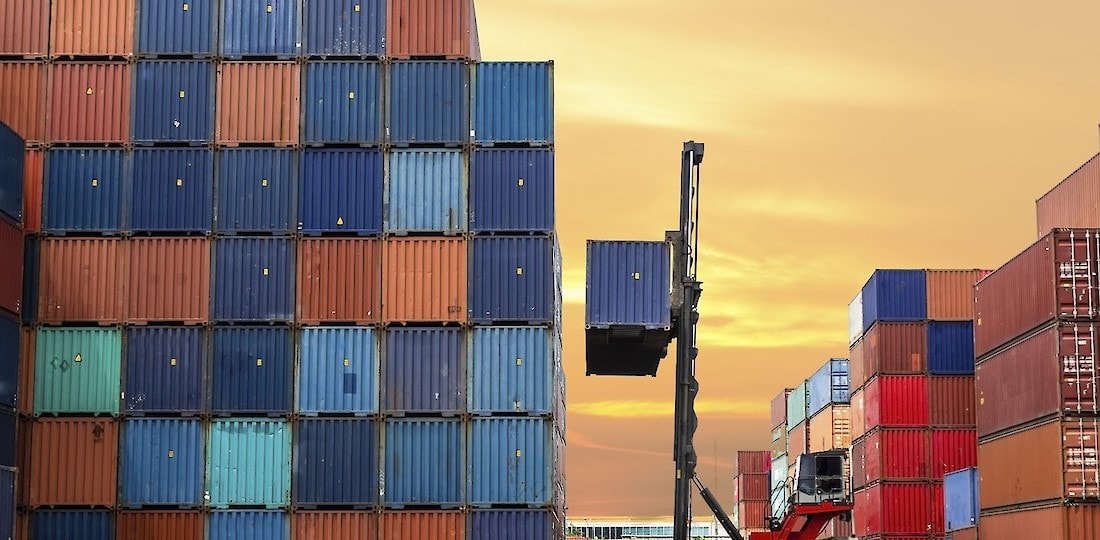The United States faces a historic container gridlock. China, South Korea and Thailand are the three countries that supply Mexico in high seasons
Due to the shortage of supplies for the production of electronic devices, the lack of containers, the increase in international freight costs of up to 300% (in the case of Mexico from Asia, freight rates reach increases of between 900% and up to 1000%) , as well as a reduction in port activity in key ports for international trade, could occur for high demand dates such as Good End, Christmas and the Three Kings, product shortages, especially in electronic products, toys and clothing, as highlighted An analysis by Drip Capital México, a fintech specialized in financing exporters and importers.
Given the shortage of containers that has occurred worldwide since mid-2020, various industrial sectors have suffered impacts on delivery times and logistics planning.
According to the analysis of Drip Capital, it is expected that this shortage will be overcome until 2022, so there is a high possibility that, in the high season of consumption, there will be less availability of products from industries such as textiles, toys and electronics (especially telephony and computers).
According to Descartes Datamyne, the United States faces a historical stagnation of containers, since of every 100 units that arrive at its ports, only 40 are exported, that is, 60 are accumulating on a route in which 900,000 containers are moved per month on average.
Additionally, in the middle of this year, there was a new delay and logistics crisis caused by a resurgence of COVID-19 in the Yantian port area, Shenzhen, China, the third most important port in the world, which presented a drop in operating capacity of 30%, with an estimate of 175 thousand delayed containers.
In addition to this, since December 2020, alerts have been raised in the face of a clear shortage of semiconductors which, motivated by high demand and low production of these inputs, has wreaked havoc in industries such as the automotive industry and electrical appliances.
According to estimates by the consulting firm Alix Partners, this lack of inputs will cost the automotive industry up to 110 million dollars in revenue this year.
“Despite a possible shortage of imported products, mainly from Asian countries, when we talk about large electronics and video game brands (which have remained stable since last year) it will be unlikely to see effects on their prices, beyond those directly related to inflation or exchange rates,” says Gregorio Vázquez, commercial director of Drip Capital México, adding that “in situations like this there is a potential for the generation of phenomena such as the proliferation of informal secondary markets, dedicated to reselling these goods to overpriced and second hand.
The executive also specifies that “for the micro or small importer (the one that brings, for example, backpacks for the school season or pajamas for winter) it is likely that prices will be affected due to the availability of production at origin, which can raise the cost to place purchase orders to Mexico”.
The route to get to Mexico
According to Drip Capital’s analysis, the three countries from which Mexico imports the most in high seasons are: China, South Korea and Thailand.
Of these, the main maritime export points are the ports of Shenzhen, Xiamen, Shanghai and Qingdao, in northern China; Busan, in South Korea and Bangkok, in Thailand.
As for the route and times for moving goods, the fintech analysis highlights that the imports made from these points usually arrive directly, crossing the Pacific. However, there is a more competitive alternative in terms of cost, but longer in transit time: the journey known as “Cross Trade” which, by sea, makes stops in some European countries to disembark in Mexico. This process reduces logistics costs by up to 66%, compared to more direct shipments, but increases delivery times from 45 to 60 days.
«These loads leave countries such as Pakistan, India or Arabia and take their course through the Suez Canal in the Mediterranean. They generally transship at some port in northern Europe, such as France, Germany or Belgium, and connect to Mexico practically directly, making some minor stops. They arrive in Mexico through the Atlantic, in the Gulf, especially in Altamira and Veracruz,” says Gregorio Vázquez.
According to the expert, another aspect to highlight in the calendar of the import process is the passage through customs, since sometimes prevention programs, such as merchandise inspection traffic lights, can delay their arrival. In addition to this, there is the possibility of generating extra expenses in case of acquiring an unforeseen tax.
Timely notice
Based on these challenges, Drip Capital proposes that Mexican importing companies take the following precautions when placing orders to cover the demand of high seasons:
Delivery times may vary according to the season. It is very possible that there is a saturation of freight during high seasons, since shipments are generally made in weekly periods. For this reason, you must have at least one or two more weeks contemplated in the logistics calendar, in case there is any delay in shipping the freight or an unforeseen event in customs.
Have multiple sources of funding. Having financing options can be of great help in case you face a complicated situation with importers. Likewise, it is important to consider small and medium-sized suppliers, as well as their logistics processes, because if they have capital or coordination, they can cause unexpected delays in your own operation. For them, consider agreements to offer financing to your partners or suppliers in order to make your supply chain more efficient.
Diversify the items that the company sells. A completely valid option for Mexican importers would be to diversify the products they sell. In other words, a company that is dedicated to the sale of a category can expand its catalog to similar products from other brands, in order to maintain its sales with other consumers.

